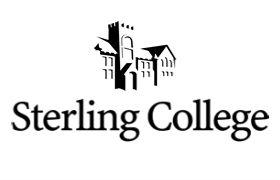Sterling College Assistant Professor of Biology Publishes and Speaks

For several years Sterling College Assistant Professor of Biology Dr. Jonathan Conard has researched Kansas elk and white-tail deer with colleagues and students, and he and his colleagues recently shared the results of their work. A paper on the elk study was published in the journal "Restoration Ecology," and Conard, with his co-researcher Blecha, presented on the white-tail deer project at the 90th annual American Society of Mammalogists (ASM) meeting in Laramie, Wyo.
The elk project began in 2003 as part of Conard's doctoral dissertation at Kansas State University. The field work, which he did with other colleagues from the Biology Department at KSU, was completed in 2007. Conard was the lead author of "The Influence of Translocation Strategy and Management Practices on the Genetic Variability of a Reestablished Elk (Cervus elaphus) Population," which was published in the online version of "Restoration Ecology" on May 21. It will also appear in the July print issue of the journal, which "fosters the exchange of ideas among the many disciplines involved in the process of ecological restoration" by "address(ing) global concerns and communicat(ing) them to the international scientific community." In their paper, Conard and his co-authors quantified the genetic variability of a reintroduced elk population in the tallgrass prairie ecosystem of northeastern Kansas. The results of their study have implications for understanding how translocation strategies and post-reintroduction management may influence the genetic variability in restored populations, an important indicator of long-term success for reintroduced animal populations.
Conard and Blecha, a colleague from the Division of Biology at Kansas State University, began the white-tail deer project, which is ongoing, in 2006. Several Sterling College students have been involved as research technicians, collecting distance-sampling data, conducting spotlight surveys, and tracking some of the collared deer. The project studies the deer population at Quivira National Wildlife Refuge in central Kansas. Deer densities in the study area are nearly double that of adjacent areas. The research team determined locations of male and female deer between 2008-2009 using radio-telemetry. Using data from individuals of 50 different social groups, the co-authors examined seasonal variation in near-direct and indirect contact rates. They presented this information at the 2010 ASM meeting, held from June 11-15. The ASM was established in 1919 for the purpose of promoting the study of mammals. Most members of the ASM are professional scientists with a strong interest in the public good.
Conard will continue to include SC students in the Quivira white-tail deer project. "This has been a great opportunity for students to get involved in research and get some field experience," said Conard.
"As an institution we are proud of Dr. Conard's continued research in his field," said Vice President of Academic Affairs Dr. Gregory Kerr. "It benefits both the College and the community at large, and it provides hands-on experience for students going on to careers and further education in the scientific world."


